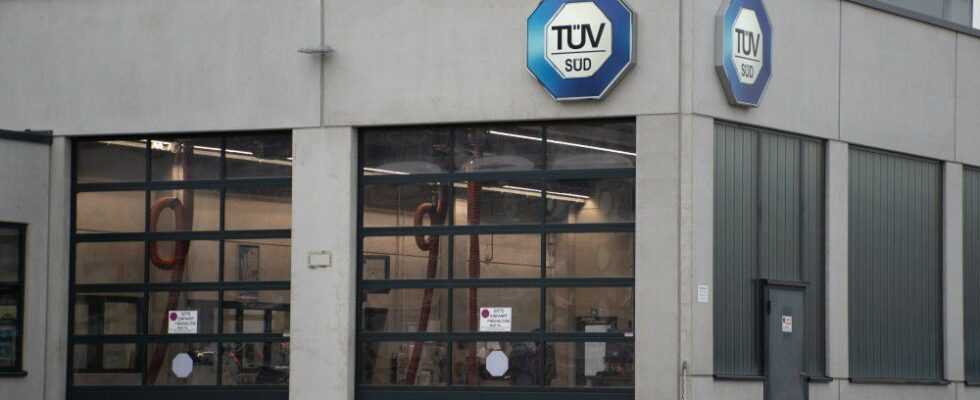E-car owners should pay attention to an expensive weak point. This is the result of a TÜV evaluation of the main inspections.
Enlarge
TÜV warns of a typical weakness in electric cars
© Anne Czichos/Shutterstock.com
The TÜV has evaluated how well electric cars perform in the main inspection. This confirms a suspicion that is expensive for e-car owners and has been harbored by car experts for a long time: e-cars often have a very typical weak point.
These four e-cars under the magnifying glass
The TÜV specifically analyzed these four popular e-cars for their performance in the general inspection: BMW i3, Renault Zoe, Smart Fortwo Electric Drive and Tesla Model S. The result is unlikely to please many owners of the not exactly inexpensive vehicles.
Smart Fortwo Electric Drive
Of the four electric vehicles considered, the electric Smart Fortwo came out on top with a defect rate of 3.5 percent. For comparison: Among the 2 to 3-year-old vehicles with combustion engines, the proportion of cars with “significant defects” is 4.7 percent on average. The Smart is therefore better than the average of all tested cars and ends up in the first third.
BMW i3: Brake discs are a typical weak point in many e-cars
It is followed by the BMW i3, which hits the short cut with 4.7 percent and would rank in the second third. In addition to defective low beams, defects in the brake discs are often noticed in the i3, as the TÜV writes. The i3 thus shows a typical weakness of electric cars. Because e-cars usually brake much less with their braking systems and instead often only use recuperation (recovery of braking energy via the e-motor) to slow down. Often that alone is enough to get an e-car to a standstill in time. However, this means that the brake discs are “derusted” less often and therefore accumulate much more rust and dirt much faster; the self-cleaning effect of the brake discs is missing. This in turn causes the brake discs to wear out much more over the long term.
BMW i3: BMW ends production of its first electric car
On the other hand, only “artificial” braking helps, i.e. consciously applying the brakes more often than is actually necessary. However, manufacturers could also mitigate the problem by using higher-quality alloys for the brake discs.
Renault Zoe
But further in the ranking of e-cars at TÜV: The Renault Zoe would end up in the last third with a defect average of 5.7 percent. In addition to defective or incorrectly adjusted headlights, the Zoe has an above-average number of defects in the axle suspension.
Renault Zoe fails in the crash test: that’s what Renault says
Tesla Model S
The worst electric car is, of all things, the most expensive vehicle: The Tesla Model S performs particularly poorly in the main inspection. With a defect rate of 10.7 percent, every tenth Tesla Model S fails the first main inspection and would also end up in the last third of the 128 combustion engines, as TÜV emphasizes. Only the Dacia Duster and the Dacia Logan would rank behind the Tesla, i.e. cars that cost only a fraction of the Tesla Model S. In addition to defects in the fog light and the low beam, the Model S at the HU mainly has problems with the wishbones.
New checkpoints
Incidentally, the general inspection of electric cars includes new test points that do not exist in combustion vehicles. In electric cars, for example, the attachment of the high-voltage battery, the condition of the insulation and the cables, connections and plugs are checked. If the charging cable is available, easy plugging and unplugging of the plug from the charging cable is checked. The function of the immobilizer is also checked when the charging cable is connected. The charging cable itself has not yet been tested because there is no obligation to carry it, explains the TÜV. The battery of e-cars is currently only subjected to a visual inspection.
On the other hand, there are also no test points for e-cars, such as checking the exhaust system for leaks or checking the engine for oil leaks.
Notice:
The above figures on the frequency of major defects are based on the main inspection of 9.6 million vehicles that were carried out from July 2020 to June 2021. The information is based on 1142 main inspections of the BMW i3, 1939 of the Renault Zoe, 1645 of the Smart Fortwo Electric Drive and 812 of the Tesla Model S.
Video: Owner has his Tesla Model S blown up – battery repair too expensive
TÜV approval for cars & motorcycles during the corona crisis: this is how it works
Thanks to Corona: Cars without a TÜV remain free of fines for longer
Dangerous defect: New defect category for main inspection
